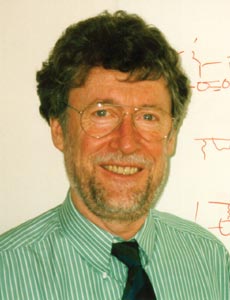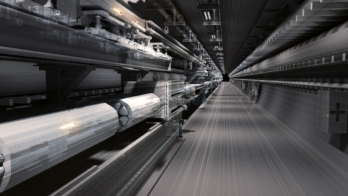Big science needs its own brand of globalization, argues chairman of the DESY directorate, Albrecht Wagner.

Industry pushes economic globalization to strengthen its market position. The process is driven by the need and desire to increase efficiency and reduce costs, but also by the wish to make the best use of different competencies in different countries. Take the European aircraft industry: parts of planes, such as the wings, tail unit, body and engines are built in different regions of Europe, and finally assembled at one plant. This has enabled distributed regional industries to jointly play a major role on the international market. Yet people are afraid to be at the mercy of some anonymous pressure, and thus increasingly oppose globalization.
Large-scale facilities in science are also increasingly tackled on a global scale. Radio-astronomers around the world have united behind the idea of jointly building their next project, ALMA, a merger of the major millimetre-array projects into one global project. Particle physics has for quite some time moved in the same direction: the large experiments have always been a role model for the shared construction of large equipment. The LHC is built with components from around the world, like HERA before it.
Global challenge
To meet the challenges of the future, accelerator-based particle physics needs to become even more global than in the past. One possible concept, the Global Accelerator Network (GAN), was originally developed as a way to build a linear collider as an international collaboration, to make the best use of worldwide competence, ideas and resources, to maintain and foster the centres of excellence in accelerator physics around the world, and to root the linear collider as an international project firmly inside the national programmes (CERN Courier June 2000).
Global projects rely on collaboration. In the past, particle physicists have developed a culture of collaboration that has worked very successfully. Indeed, they had to do so to meet the scientific challenges. Collaborations function well if their leadership acknowledges the individuality and freedom of all the partners. They do not have a strong hierarchical structure, but are driven instead by a common scientific goal. They probably would not function with an industry-style management.
Therefore the question arises as to whether a model that works for experiments can be extended to accelerators. Or to put it differently: what is needed to make this model work for accelerators as well? These questions were studied by an ICFA working group in 2001, and are now being addressed within the framework of a series of workshops, the first of which, “Enabling the Global Accelerator Network”, took place in March at Cornell. This workshop dealt with technical aspects of the remote operation of facilities, which is a key ingredient of the shared operation of accelerators. No basic problems are expected here. In fact, the TESLA test facility has already been operated remotely from Italy and France.
On the other hand, it became clear at the workshop that the sociological aspects of such a joint endeavour are probably the true challenge. As the GAN concept is built on the principle of shared responsibility, the sharing of know-how and controls is also part of the concept. The laboratory at which the facility is located would therefore relinquish the project control it traditionally had to become one of the equal partners. Mutual trust is the critical element required in order for such a collaboration to be successful.
It is well known that distributed organizations need to build up and maintain trust. Sharing working time from the very beginning is a powerful agent in establishing this trust. This requires a mixture of face-to-face interactions and the use of appropriate communication and collaboration technologies. These interactions should start as early as possible, even during the planning and R&D phase. Mutual trust and interest will continue to grow during the build-up time of the project, and will have to be sustained through the transition from early commissioning to operation and scientific exploitation. Industry is developing many tools to support the full spectrum of situations, ranging from planned, structured activities (such as scheduled meetings) to unplanned interactions.
Trust and involvement of both institutions and individuals have to be maintained over a long time – the duration of the project being typically more than 20 years. Producing exciting science and meeting technological challenges will be the key ingredients for ensuring a long-term interest of all the partners. Working on the frontiers of technology creates the need for a continuous upgrade culture. This culture needs to be distributed around the world.
However, even if the necessary trust is established, we need to solve many questions of key relevance in order to guarantee the success of the project and the major investment it requires. These questions include the management structure and organizational forms. They again are closely related to trust – we cannot afford for scientists and engineers to become disenchanted and to walk away. We need to approach global collaboration on large scientific infrastructure projects with a lot of imagination and determination.
The future of particle physics is no longer determined by scientific challenges only.





